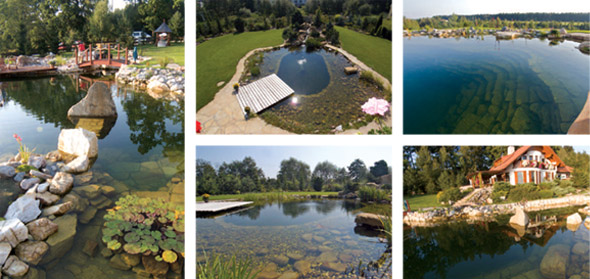Australia is synonymous to swimming pools. With the highest pool ownership per capita in the world, Australians won’t be caught dead without a pond in their backyards.
Not many of you might imagine that literally though. Gaining traction among homeowners now, especially the more environmentally conscious set, are swimming pools that have more in keeping with ponds than chlorinated, aquamarine boxes.

Presenting, the natural pool—the answered prayers of people who fancy a dip at home but not the taste and odour of chlorine. More and more of these stunners are cropping up all over the world.
This guide will run down the upsides of owning a ‘swimming pond’ over a conventional pool as well as tips on how to conjure one in your yard.
What is a Natural Pool?
A natural pool is equal parts water garden and swimming pool. It’s not really a swimming pool in the orthodox sense, since it doesn’t rely too much on chemicals and mechanical materials. But it’s also not a pond, cloudy with eroded soil and groundwater run-off; you can see the bottom of a natural pool.
Such independence from chemicals is achieved through the natural pool’s planting or regeneration zone, composed of aquatic plants and a simple network of skimmers and pumps. The vegetation serves as the water’s biological filters and aerators, teeming with good bacteria that eliminate contaminants and excess nutrients.

A natural pool is usually made of bentonite clay, gravel or stone instead of the conventional concrete and fibreglass. It typically has a lining of ethylene propylene diene monomer (EPDM) or reinforced polyethylene, among other materials.
Unfortunately, natural pools have yet to really take off in the US and Australia. They are rather something of an ubiquity in Europe. The concept emerged as early as the mid-1980s in Austria and Germany. Even hotels in said countries offer natural pools instead of the typical squares of unnatural blue.
Benefits of a Natural Pool
One of the most common fallacies about natural pools is that they are more expensive than traditional pools. Granted, the construction costs are the same, but the cost of maintaining a natural pool pales in comparison to that of its more artificial brethren. With the former, there is no need for expensive chemicals. Moreover, you only have to fill a natural pool once and top it off from time to time.
Natural pools allow nature to police itself. In other words, you only have to sit back and relax as the plants clean the pool. There is no need to be pedantic about chlorine levels or paranoid about the electricity for the filter system. All the filters you will need are botanical.
In winter, you don’t share the burden of other traditional pool owners, draining their tubs, as it were. You simply let your pool be as any other body of freshwater: freeze over. Now you have an instant skating rink!
Create a Swimming Pond

While clay, stone and gravel are advisable, you can always build a natural pool using cement or Rastra block. However you want your pool constructed, there is one constant, and that is the aquatic plant.
Take your climate into account when selecting plants. Ensure they are all native to your region. Good aerators include hornwort and common waterweed. For the deeper areas of your plant zone, grow floating plants like water lilies, pondweeds, and common duckweeds. Also consider sedges, lesser cattails, aquatic irises, rushes, pickerel weeds, and water primroses.
You also need to be selective about your soil. Do not use soil contaminated with faecal matter, such as those in grazing grasslands. Don’t use compost or humus too. In fact, you should be wary about and regularly test for the presence of phosphorus, which comes from fertilizers and urine. Aquatic plants will do fine with just six inches of soil at most.
Alas, plants alone will not sustain the pool. Your responsibility is to compel water circulation in a way that encourages the roots of the plants to clean the water. Install underwater aerators to prevent eutrophication and ensure oxygen supply for the plants. For your electrical needs regarding pumps and compressors, refer to an experienced electrician.
Algae and Contaminants
In time, your plant zone will invite tadpoles and dragonflies to prey on mosquito larvae. However, your biggest problem with a natural pool is neither an insect nor large animal but a far simpler organism: algae. A modicum of algae can be expected in a natural pool but you can control most of them. Use ultraviolet sterilizers in the pump area to retard their proliferation.
When all is said and done, a fair amount of bacteria and contaminants will remain in the pool. That said, the odds of getting sick from a natural pool are slim. Natural pools are no more impervious than chlorinated pools to, for instance, faecal coliform. To mitigate the presence of such contaminants, forbid pets and babies from swimming in the pool.
Australia’s government can work with you regarding pool safety requirements.
Conclusion
You can be sure that the expense of building a natural pool is just comparable to a chlorinated pool. The game-changer is the visual appeal of a natural pool. Your house would look more in harmony with nature.
Yet the biggest perk of owning a natural pool is the negligible stress it brings compared with its conventional counterpart. A natural pool makes for a home project that is not only light on your pocket but also on the environment.
